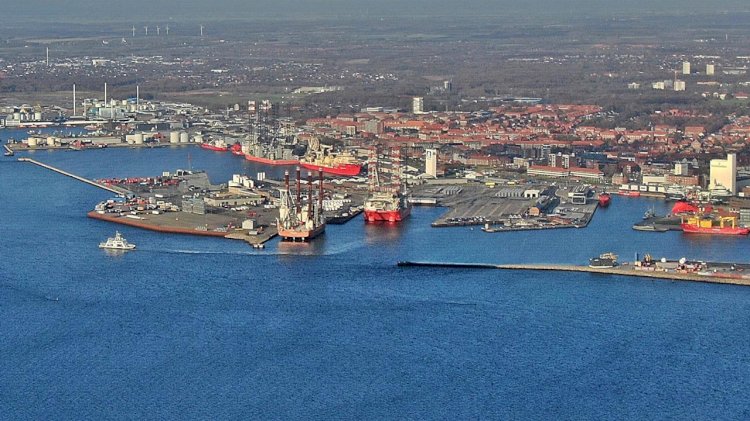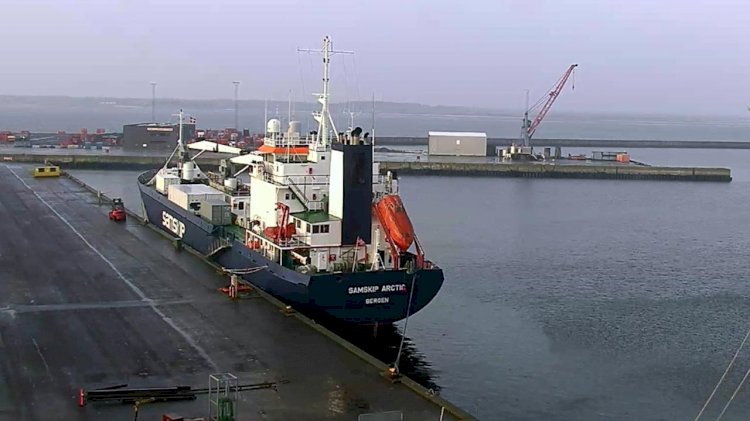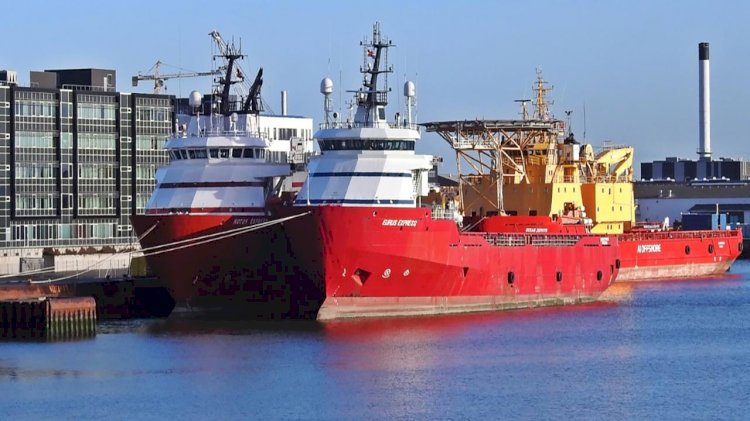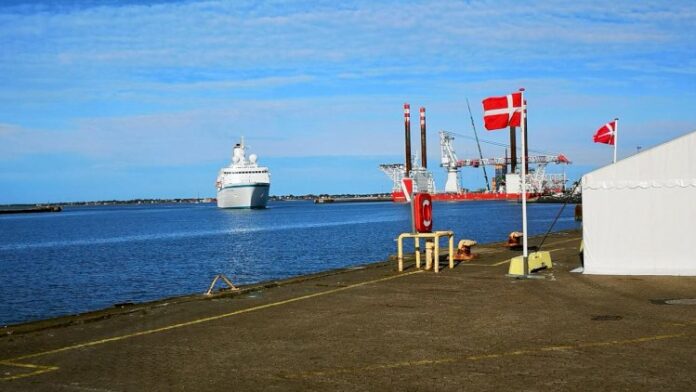By the end of this century, the sea level at the port of Esbjerg will have risen dramatically according to the evidence of a report that has just been published. For quite some time, Port Esbjerg has been taking measures safeguarding the harbour area against extreme climate conditions to come.
If the emissions of greenhouse gases continue to rise, the sea-level at Esbjerg will have risen by 89 centimetres at the beginning of the 22nd century. This is the conclusion of a new report produced by researchers at GEUS – The Geological Survey of Denmark and Greenland.
The study shows that Esbjerg is much more vulnerable to climate changes and extreme floods than other coastal areas in Denmark, such as Skagen or Copenhagen. Here, at worst, sea levels will have risen by 77 and 64 centimetres respectively by 2100.
The researchers from GEUS operate with two scenarios in the study. In one scenario, the rise in greenhouse gases continues unchanged around the world, and it is in this scenario that the sea level will have risen by 89 centimetres in the year 2100.
The other scenario is based on the possibility that emissions are reduced as set out in the Paris Agreement. In this scenario, the researchers expect the sea level at Esbjerg to rise by 63 centimetres – compared to a rise of 51 centimetres in Copenhagen and 39 centimetres at Skagen.
 The researchers from GEUS operate with two scenarios in the study. In one scenario, the rise in greenhouse gases continues unchanged around the world, and it is in this scenario that the sea level will have risen by 89 centimetres in the year 2100. The other scenario is based on the possibility that emissions are reduced as set out in the Paris Agreement.
The researchers from GEUS operate with two scenarios in the study. In one scenario, the rise in greenhouse gases continues unchanged around the world, and it is in this scenario that the sea level will have risen by 89 centimetres in the year 2100. The other scenario is based on the possibility that emissions are reduced as set out in the Paris Agreement.
The bleak predictions published by GEUS are taken seriously at Port Esbjerg, as the company is well aware that global warming is a reality that you would be ill advised to ignore. However, floods are not a source of concern, as Port Esbjerg is already taking measures against the global issue of rising sea levels.
Jesper Bank, Chief Commercial Officer of Port Esbjerg, says:
“We’re naturally aware that climate change is a reality; the issue is part of our day-to-day work and there’s no escaping the rising sea levels. But readiness is all, and it’s clear that we must now take steps to safeguard ourselves against the ever-increasing forces of climate change.”
This is also why the new phase-five extension of Østhavnen (the east harbour) will feature a quay height that is six metres above the normal water level, keeping safe both goods and people on the harbour front.
Port Esbjerg is already taking measures against the global issue of rising sea levels. This is why the new phase-five extension of Østhavnen will feature a quay height that is six metres above the normal water level, keeping safe both goods and people on the harbour front.
It is nothing new that Port Esbjerg focuses on the issue of rising sea levels. Jesper Jørgensen who is an engineer with Port Esbjerg, explains:
“We have been addressing the risks of high-tide flooding over quite a few years, using the current figures. This means that this issue was also taken into account when the first quays were built.”
Therefore, the quays are already built to a height of 4.5 metres, and the companies renting units safeguard their property when warnings are given of extraordinary high tides. They barricade themselves with watertight shutters where they are vulnerable and remove all sensitive equipment from the harbour front. Moreover, there are rules in place stipulating that new buildings on the old harbour must be seawater resistant.
Jørgensen says:
“We and the companies on the harbour are used to taking the sea into account in every which way and to having respect for it. Consequently, I have no doubt that the companies on the old quays will also be there in a hundred years, even if they will be lower-lying than the tenants on the new sections. They will probably just have a slightly different lay-out, so as to protect themselves against extreme weather events which may well be a little more extreme in the future.”
 The quays at Esbjerg havn are built to a height of 4.5 metres, and the companies renting units safeguard their property when warnings are given of extraordinary high tides.
The quays at Esbjerg havn are built to a height of 4.5 metres, and the companies renting units safeguard their property when warnings are given of extraordinary high tides.
Esbjerg Local Authority is also working on a comprehensive action plan, deciding how to handle the rising sea levels in the future, and according to Port Esbjerg, it is highly beneficial to have the local authority on board, even if the harbour and the companies on the harbour are already braced to adapt to the rising sea levels.
However, the future climate changes and sea-level rises will not only affect the harbour, they will also affect the city of Esbjerg. Therefore, Port Esbjerg and Esbjerg Local Authority regularly discuss joint measures and common areas of interest. Jørgensen says:
“We obviously collaborate and will engage if joint solutions are suggested at some point.”
In Britain and the Netherlands, the basic infrastructure of many of the harbours was built several centuries ago. These harbours will face much greater challenges when sea levels rise. Bank explains:
“In the Netherlands, there are huge sea-wall projects underway, where hundreds of kilometres of sea wall are raised 5–10 metres to protect harbour infrastructure as well as towns and cities. This is an enormous investment. Compared to such challenges, we get off lightly at Esbjerg.”




